This is the first harvest of summer 2014—a few squash and zucchini that managed to outrun the oncoming squash bugs, some hot peppers, basil and other herbs, and five Sun Sugar tomatoes. Tomatoes before the fourth of July—not bad considering our long, cold spring.
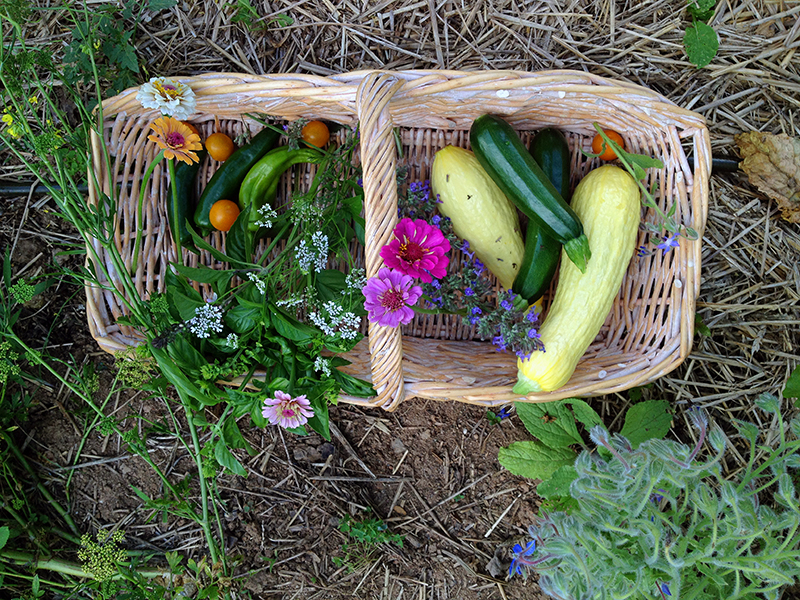
The zinnias are just coming on, and I bet tomorrow I will see the first cosmos bloom. It is great to be back in the cutting flower business. From now until frost there will be homegrown bouquets all around my house. 
Such bounty calls for a celebration with fire. As I didn’t do much for the Solstice this past weekend, I fired up the grill to cook a first harvest/Solstice feast as thunder bounced around the mountains. I just got the grill a few weeks ago, a gift from my mom, and it’s been a steep learning curve to understand this entirely new way of cooking. It’s a good challenge, and one I needed as my culinary selfeducation had grown stagnant. It feels wonderful to push myself, to make mistakes, have “eureka” moments and accidental epiphanies, and at the end of it all, if I’m lucky, dinner.
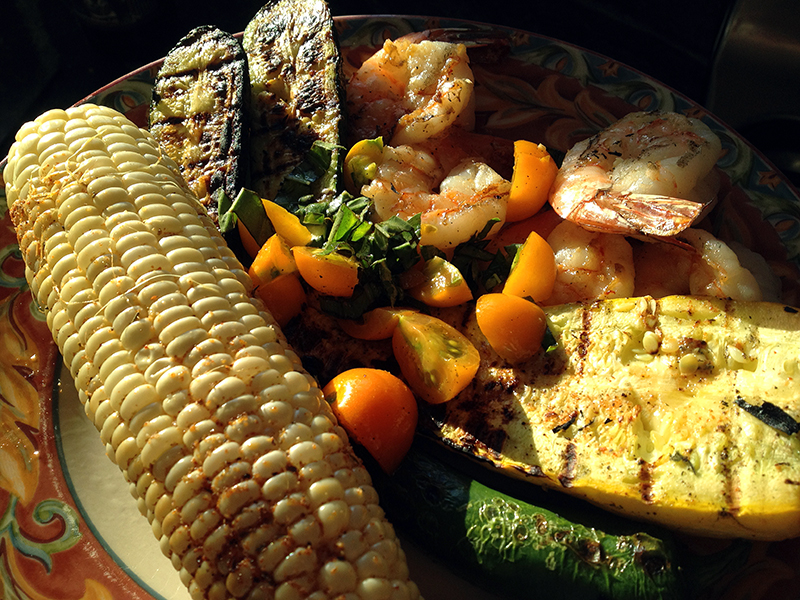
And what a dinner it was. Garlic shrimp, my veg, some corn slathered with butter and seasonings and wrapped back up in its husk to grill. A simple, perfect salsa made with my five pretty gold tomatoes, basil, salt, pepper and olive oil. These squash were on a whole other level from the pallid supermarket varieties I grilled last week. Call me a tree-hugging hippie, but I can taste a difference when I eat something I planted in April as a two-leafed seedling, nurtured and protected, and finally harvested within twenty minutes of consuming. Vegetables taste alive, almost meat-like in their nutrition and vitality. They go straight to my brain.
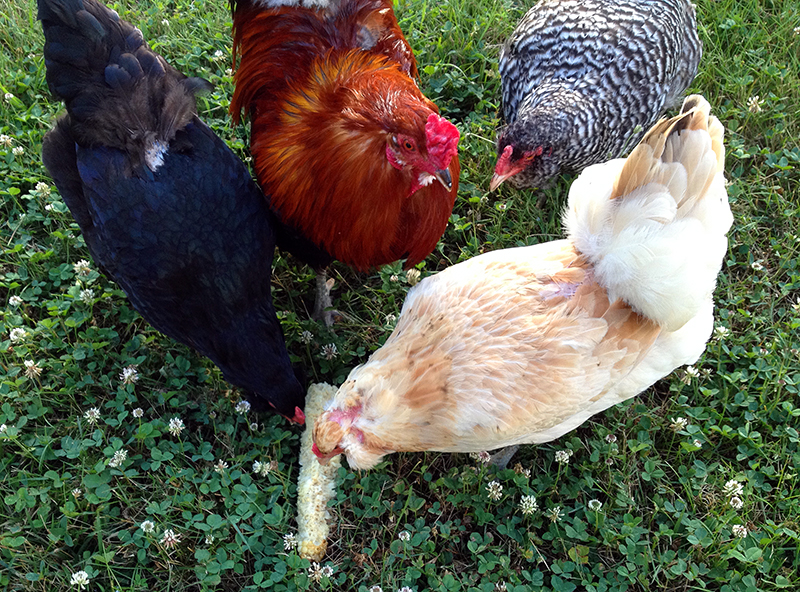
And, nothing is wasted.
I picked my first full-size tomatoes last Thursday. Winning the race were heirloom Mr. Stripey, the yellow below, and hybrid New Girl, the large red. Of course, the yellow cherry Sun Sugar has been producing for a couple of weeks already, as has Black Cherry. This is a great year to test Sun Sugar as a replacement for last year’s Sun Gold, which split too much for my liking. Even with rainfall running 200% of normal for July, the Sun Sugars are not yet splitting and I find the taste just as good.
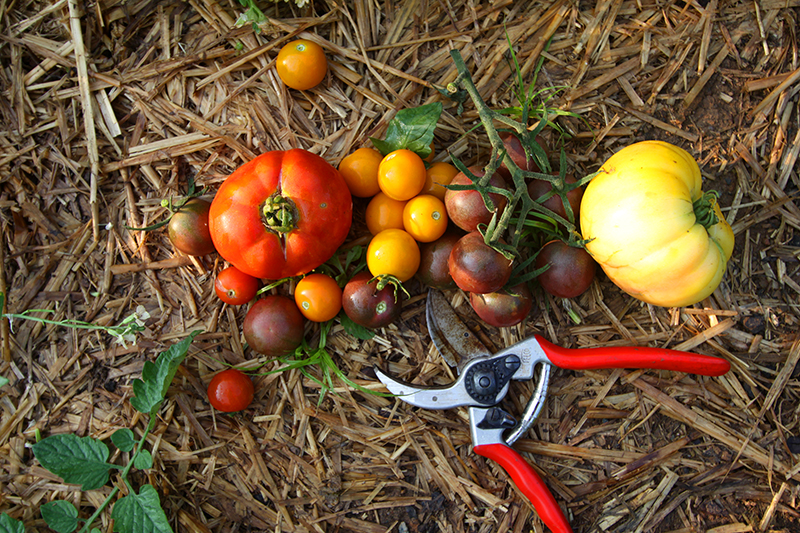
To celebrate these first tomatoes I had a few friends over for pizza and caprese salad made with fresh mozzarella and garden basil. Delicious!
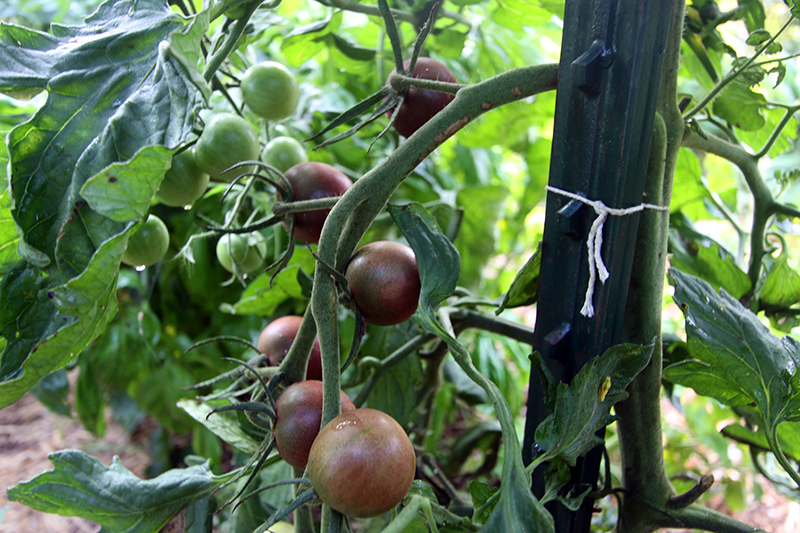
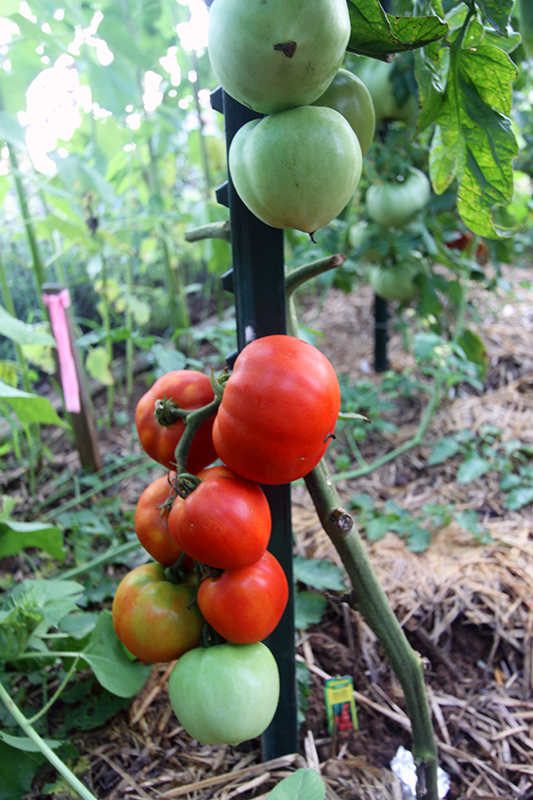
Last week’s heat wave seems to have taken its toll on the the fruiting of some tomatoes. When the temperature and humidity levels get too high, tomatoes will flower but fail to set fruit because their pollen becomes unviable. Some heirlooms are particularly susceptible to this. Here’s a good example, in Mr. Stripey, which developed a massive cluster of fruit near the soil but now has very few developing tomatoes further up the stem and evidence of lots of unpollinated blossoms.
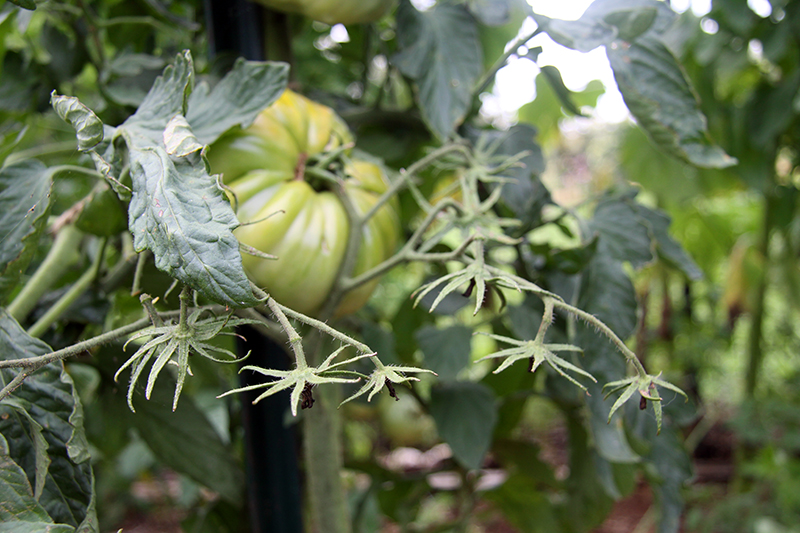
Plants may resume fruiting when temperatures drop, as long as they haven’t first succumbed to disease. I’m happy that signs of blight are still very minimal in my tomatoes, which is a good accomplishment with all the rain, heat and humidity we’ve had. And thus far I have used no chemical controls, just proper nutrition and garden hygiene.
We now move in to the tomato patch, a topic deserving of its own post.
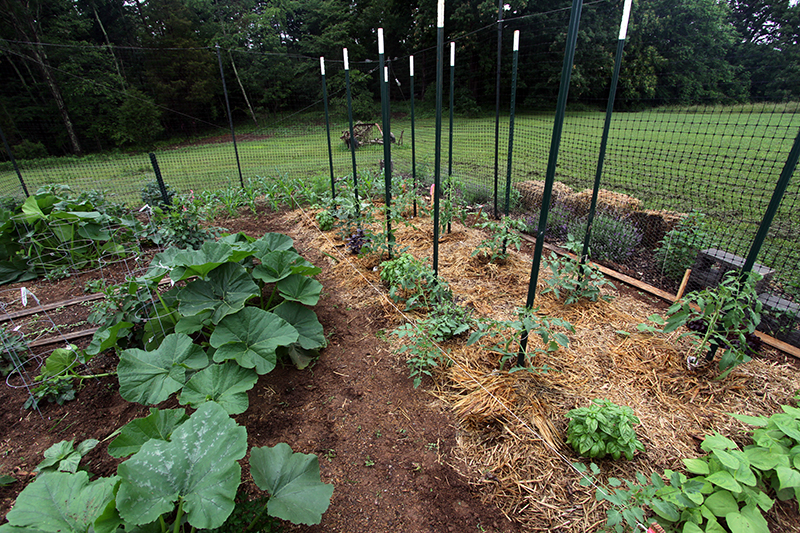
This year I got most of my seedlings from the Piedmont Master Gardener’s Plant Sale. I bought a bunch of heirlooms, including:
Constoluto Genovese
Black Cherry
Ponderosa Red
Orange Oxheart
Mr. Stripey (the only tomato of these I’ve grown before, and a favorite)
Mortgage Lifter
Green Zebra
Amish Paste
Sun Sugar (a deviation from last year’s Sun Gold, which though delicious split too much for my liking)
Abraham Lincoln
I chose these heirlooms because for the past few years I have grown mostly big-box store hybrids, and I haven’t been wowed by their taste. So this is an attempt at a fantastic tomato even though I know I am running the risk that these less-disease resistant varieties might be struck down before bearing fruit. But I also hedged my bets a bit by planting two hybrids: New Girl and Big Beef.
The worst day of spring gardening is the day I put in the tomato stakes. These are heavy eight-foot fencing posts. Installing each means I climb on a ladder and balance, trying not to tip forward and impale myself while using a sledgehammer to drive each post in the ground. This year, as usual, I ended up with a black-and-blue left hand—the victim of each missed strike. And there are many while sledgehammering at the top of a ladder.
But once the stakes were in, and after a few days of recovery, comes one of the best spring gardening days: planting the tomatoes. I did every thing I could to give my plants the best possible start, including amending each planting hole with two gallons of home made compost, a tip I picked up from this Mother Earth News article:
Unless you planted some vetch in early fall, simply mix about two gallons of compost into each planting hole. In a tomato trial at Iowa State University, compost increased overall yields by 40 percent, while early yields shot up by more than 200 percent.
I searched for but wasn’t able to find the cited Iowa State study. I went ahead with the advice anyway as an experiment.
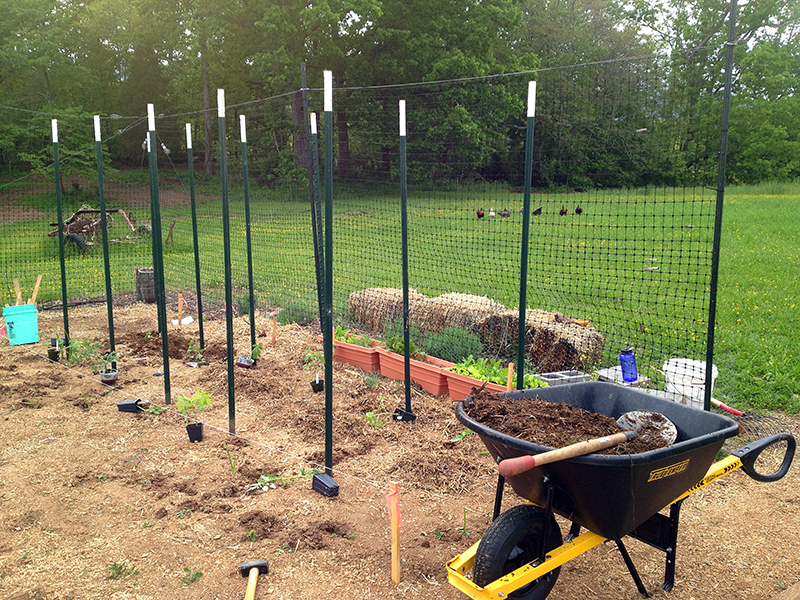
The plants had grown so leggy that some of them got as much as a foot of stem buried during planting.

The buried stems grow roots and help anchor the plant more firmly in the ground. But don’t try this with just any plant—burying most plants this deep will mean certain death (for the plant!)
After each plant was tucked deep in its compost nest I circled each stem with aluminum foil, as I always do to ward off cutworm damage. It was cold and all the plants looked peaked as they transitioned to full-sun and through transplant shock. I realized they weren’t well hardened off, and so I shaded them with boxes and gave them extra water. Then I went to the beach for eight days and worried about them all the while. But when I came back it looked like most had taken hold and were doing well. The only one that looked poor was Green Zebra, and that’s my fault for breaking its rootball while planting it. I kept it in the ground and stuck the Big Beef in next to it.
And now they’re all doing great and we’ve transitioned into the normal maintenance routine which means pinching out suckers and tying each vine to the post as it grows. Most plants have already set flowers, which is a sign that their compost beds aren’t too rich for their liking—a good thing.
I remain hyper-aware to signs of disease, and have taken a few steps to help prevent it. After the soil warmed up, I heavily mulched around each plant with straw. This keeps soil from splashing on the plant leaves when it rains, and cuts down on disease transmission from soil-borne pathogens. I have also removed any lower leaves that touch the soil with the same idea in mind. It’s a hard call to make, as those leaves shade the stem during the hottest part of summer, but any way to keep the dirt off the leaves helps reduce infections.
With all this preparation, and a hefty dose of luck, I hope to have a few good tomatoes this year. Stay tuned!











